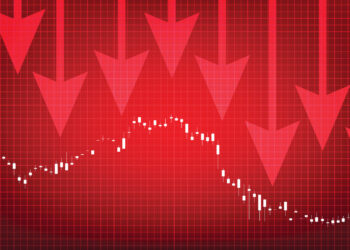Nigeria’s economy continued its upward momentum in September 2025, as the Purchasing Managers’ Index (PMI) rose to 54.0 points, indicating stronger expansion in business activity across key sectors.
According to the latest PMI report released by the Central Bank of Nigeria (CBN), the index increased from 51.7 points in August, marking the tenth consecutive month of expansion.
The improvement reflects broad-based growth across the Industry, Services, and Agriculture sectors, reflecting sustained economic resilience in the third quarter of 2025.
Broad-based expansion across sectors
The Composite PMI growth in September, alongside its three major sectoral indices (Industry, Services, and Agriculture), indicated a healthy improvement in overall economic activity.
The report showed strong readings across key indicators:
- Output Index: 54.8 points
- New Orders Index: 53.7 points
- Employment Index: 53.4 points
- Raw Materials Inventory: 52.9 points
- Suppliers’ Delivery Time: 54.6 points
The numbers reflect rising production, higher demand, and faster supply chain performance, suggesting that businesses are operating more efficiently.
Out of 36 subsectors surveyed by the CBN, 28 reported expansions, while only 8 recorded mild contractions. The Forestry subsector recorded the strongest performance with an impressive 73.6 index points, while Nonmetallic Mineral Products posted the sharpest decline to 40.7 index points.
Industry sector PMI
The Industry Sector PMI rebounded to 51.4 points in September, up from 49.1 points in August, signaling a return to expansion after briefly contracting in the previous month.
Out of 17 industrial subsectors, 11 recorded growth, led by Printing & Related Support Activities (59.4 points), while 6 subsectors showed slight contractions, with Nonmetallic Mineral Products being the weakest at 40.7 points.
Key indicators within the sector showed:
- Output: 51.6
- Employment: 51.9 points
- The Raw Materials Inventory: 51.1 points
- Suppliers’ Delivery Time: 54.6 points
Although New Orders (49.4 points) contracted slightly, overall activity remained positive, reflecting better production output and labor engagement.
Printing & Related Support Activities recorded the strongest expansion of 59.4 index points among the subsectors, while Nonmetallic Mineral Products posted the most pronounced contraction of 40.7 points during the review period.
Services Sector PMI
The Services Sector maintained its solid growth streak for the eighth consecutive month, posting 54.7 points in September.
All key indicators expanded: Business Activities (56.3), New Orders (55.1), Employment (54.1), and Inventories (53.2), all showing consistent demand and employment growth in the sector.
Out of 14 subsectors, 12 recorded expansions, led by Educational Services (65.8 points), while Professional, Scientific & Technical Services saw a mild contraction at 45.6 points.
Agriculture Sector PMI
The Agriculture Sector PMI rose to 54.8 points, marking its fourteenth consecutive month of expansion and maintaining its position as the strongest-performing sector.
Growth was broad-based, with all five subsectors expanding. Key sub-indices were:
- General Farming Activities: 55.4 points
- New Orders: 55.9 points
- Employment: 53.4 points
- Raw Materials Inventory: 54.5 points
The Forestry subsector led the gains, posting a remarkable 73.6 points, highlighting sustained agricultural strength and its contribution to national output.
Price trends: input and output indices
Across all sectors, input prices remained higher than output prices, reflecting persistent cost pressures faced by businesses.
- Composite
Input Price Indices: 64.2 points
Output Price Indices: 59.9 points- Industry
Input Price Indices: 63.1 points
Output Price Indices: 58.3 points- Services
Input Price Indices: 62.9 points
Output Price Indices: 60.7 points- Agriculture
Input Price Indices: 68.4points
Output Price Indices: 60.2 points
The Agriculture Sector recorded the highest input costs, while the Services sector posted the highest output prices for the month. Conversely, the Services sector had the lowest input price pressure, and the Industry Sector had the lowest output prices in September.
Why it matters
The PMI is a key indicator of economic health, as readings above 50 signify expansion. Nigeria’s 54.0 reading in September indicates continued improvement in output, new orders, and employment.
This sustained expansion is a positive sign for investors and policymakers, pointing to growing business confidence, improved supply chain efficiency, and a stable macroeconomic environment as the country heads into the final quarter of 2025.
With strong performances across agriculture, services, and industrial activities, Nigeria’s economic outlook remains upbeat, signaling that the country’s post-tightening recovery momentum is gaining ground.























